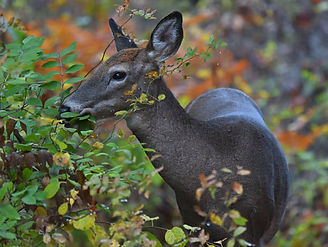
Planting for Wildlife
By design, nearly all plants have wildlife value. Refer to this list for some of our favorites for attracting deer, turkey, quail, and many other types of wildlife. Species are available as bareroot seedlings and containerized plants. Containerized plants are available year-round and our bareroot season is mid-November to early March.
All of the oak species have good wildlife value.
here are some more exceptional selections and the age at which they produce acorns:
-
Quercus alba (White oak) large acorns in 15 yrs.
-
Quercus bicolor (Swamp white oak) 10 yrs. Great for wet areas.
-
Quercus michauxii (Swamp chestnut oak) apprx 10 yrs.
-
Quercus nuttallii (Nuttall oak) apprx 10 years. Great for wet areas (ducks).
-
Quercus pumila (Runner oak) apprx 2-3 years.
All of our bareroot seedlings are one year old and, on average, a containerized 3g will be 2-3 years old. You will find this information useful in determining how long it will be before your plants begin to bear fruit.

More fruit and nut bearing favorites
-
Carya glabra (Pignut hickory) produces nuts in approximately 15 years.
-
Castanea pumila (Chinquapin) produces nuts in 3-4 years.
-
Cornus florida (Dogwood) produces berries in approximately 4-5 years.
-
Diospyros virginiana (Persimmon) females produce fruit in approximately 10 years.
-
Ilex cassine (Dahoon holly) females produce berries in 2-3 years.
-
Malus angustifolia (Crabapple) produces fruit in 5 years.
-
Myrica cerifera (Waxmyrtle) good cover for wildlife and berries for songbirds
-
Prunus angustifolia (Chickasaw plum) produces fruit in 4 years.
-
Prunus umbellata (Flatwoods plum) produces fruit in 4 years.
Native grasses are another important facet to attracting wildlife to your area. Grasses provide cover and food for numerous species. Grasses are available in 1g containers. Some great additions to any wildlife planting are

Muhlenbergia capillaris
Muhly grass
Andropogon glomeratus (Bushy bluestem)
Andropogon ternarius (Split-beard bluestem)
Andropogon virginicus (Broomsedge)
Eragrostis spectabilis (Purple lovegrass)
Eragrostis elliottii (Elliotts lovegrass)
Muhlenbergia capillaris (Muhly grass)
Schizachyrium scoparium (Little bluestem)
Sorghastrum nutans (Yellow Indian grass)
Sorghastrum secundum (Lopsided Indian grass)

Tridens flavus
Purple Top Grass
